#now if i could get myself onto a videogame design team you'd bet id put THESE in those desert regions
Explore tagged Tumblr posts
Note
not a desert technically but I just visited the dunes in Monterey and gleefully trampled on some ice plant and I feel like you might enjoy that. if you wanna talk about the kinds of vegetation that grow in sandy soil or something I invite you to 👀
(also you're doing it! you're surviving! you'll get through that doctorate!)
ok ready this is my most important soapbox of all because soils in the desert are very special and have such cool organisms you don't find in these arrangements outside of drylands...
first lookee here. wauw beautiful utah

ok now look closer
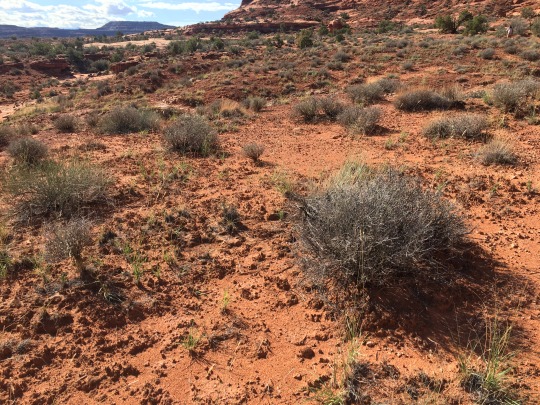
no closer closer closer
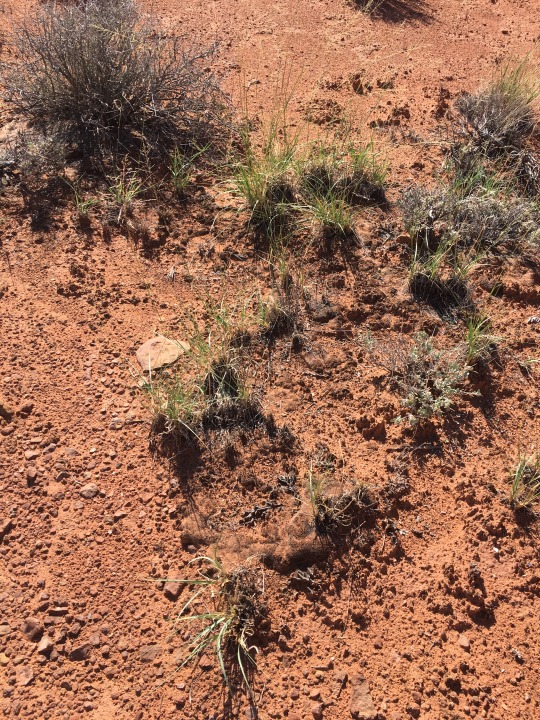
CLOSER CLOSER CLOSER

WOW is that MOSS? you are thinking. the answer is YES. but doesn't moss like lots of water you are thinking??? WELL USUALLY. BUT in the desert you will notice that things like grasses and shrubs have lots of space between them unlike in more temperate climates-vegetation cover is not truly continuous. And there's less leaf litter than in forests obscuring the dirt. Which means all that soil is just sitting out in the open with nothing to protect it from being blown away by those harsh desert winds... except of course for our friends the BIOLOGICAL SOIL CRUSTS. also known as crypotbiotic soils, cryptogrammic soils, and biocrusts (for short).
These are communities of mosses, lichens, cyanobacteria (aka blue green algae--yes, those are usually Wet too, but ironically so so common in deserts), and the tens of thousands of surface and subsurface microbes that are associated with them. It's easy to forget just how many organisms are living in one single scoop of soil, especially because science can barely identify 1% of these microbes. Like of JUST the ones we have enough info to classify enough to count in my own master's dataset left me with over 25,000 unique taxonomic units I had to manage. don't worry about what that means just know it was very annoying and makes statistics a headache. anyway you find them all over the southwest US states as well as in other deserts around the world (spain, australia, sooo many in china, incredible ones in the succulent karoo in south africa/namibia, plenty in argentina etc etc), if you know where to look...

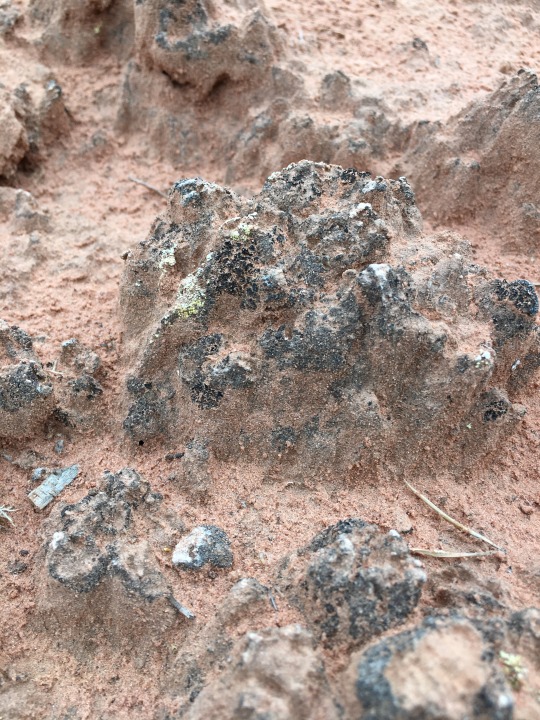
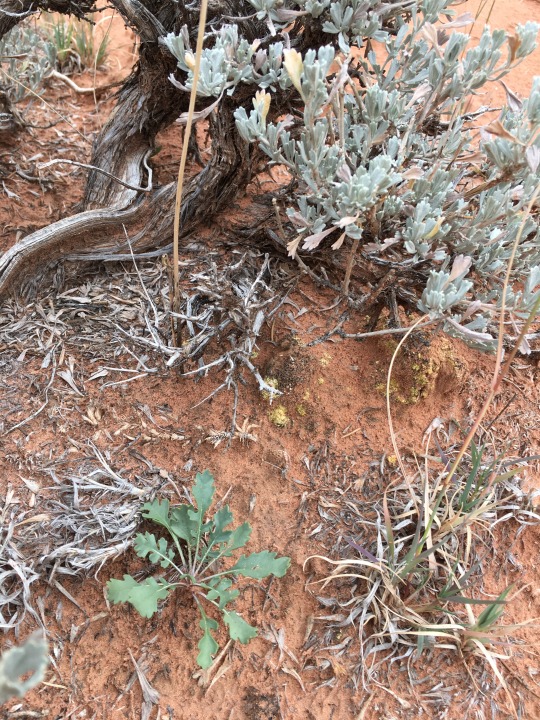


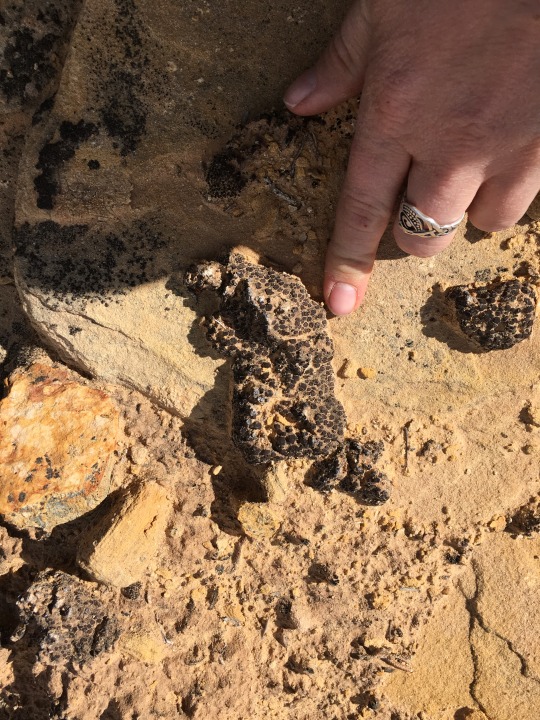
anyway OUR HEROS THE BIOCRUST aren't just there to look pretty (though you will can see from photos they also do this :) ), but are a vital component to the dryland ecosystem! They literally hold the soil surface together to prevent erosion, they influence hydrology in terms of rainfall runoff + infiltration, they impact how seeds germinate, they contribute to nutrient cycling and what plant-available compounds are held at the soil surface... like i feel like Tumblr in general has been made aware of how fungi & root networks interact in large scale systems like forests, but that is also happening on a more microscopic level in deserts! just in the top couple centimeters soooo much is happening. Cyanobacteria in particular are tiny organisms that produce little nets of sugars woven in the soil to climb around on and protect themselves, and if you crumble a little bit of soil from the surface you can see how the little spiderweb strings literally hold together the sand particles.
Now that you're Aware of biocrusts, when you look at larger scale landscape photos taken in un-trampled areas of desert, you will notice them as darker patches and textures on the lighter soil:


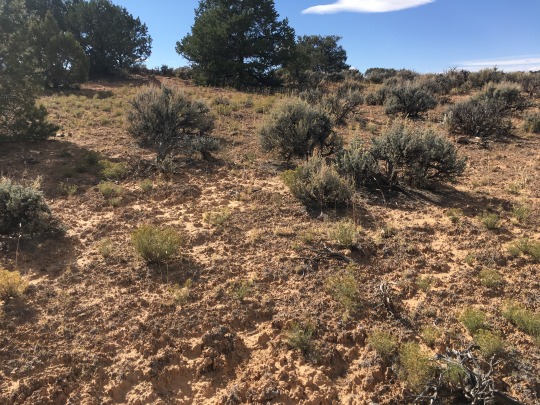
Yep there's these tiny little communities all over, that many people never learn to see. And now what I said before about mosses & cyanobacteria usually preferring wet environments--they have in fact adapted to life in the desert in ways that means they're dormant for most of the year. They live in stasis until the rainy season hits (or in some cases, winter moisture from a snow layer--many will photosynthesize through a few inches of snow since it's clear/white), and then burst into color and life. Many patches of biocrust will look utterly lifeless and dried out at first and then become vibrant and swell up within a few minutes of being exposed to moisture. Lichens, while more vibrant even when dry, will also mostly only grow/reproduce while wet. And biocrusts come in all sorts of colors, shapes, and preferred microhabitats!


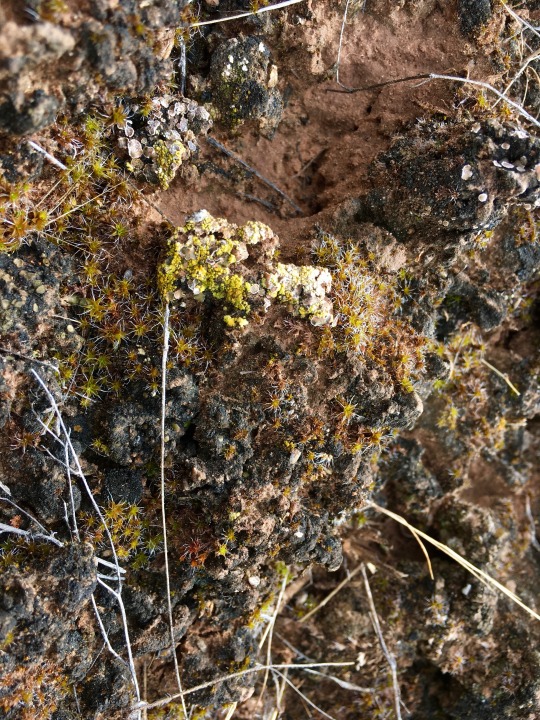

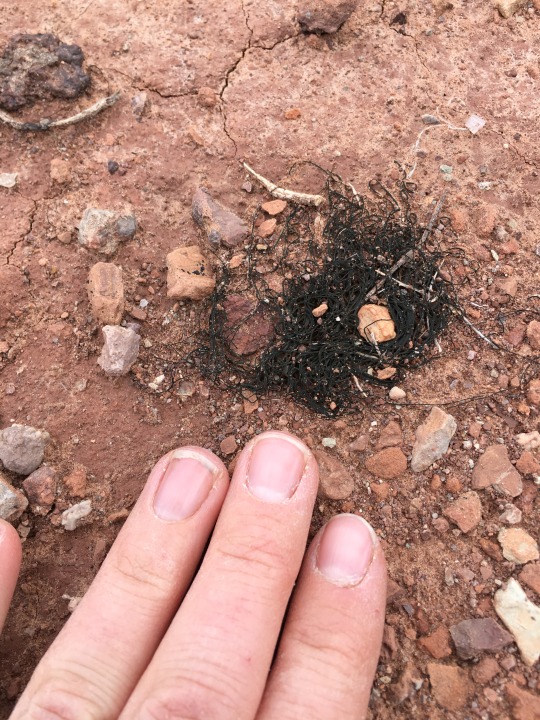
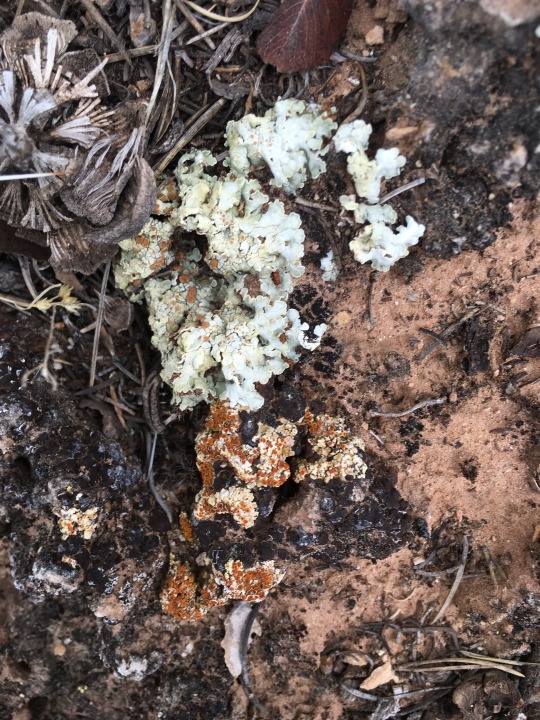

anyway this post is long enough already so i'll be quick. while beautiful and important as you can imagine these are FRAGILE. if they get trampled too much, by humans or cows or cars, that's it. you're back to bare soil that can blow away whenever it wants.
I was lucky to get to participate in a 2x/year survey of one of the very few places in Utah to NEVER have cattle grazing or development, a remote area the entrance is kept secret to inside Canyonlands National Park, where you can see just how dense and lush biocrusts once could be in the US southwest:

ah... glorious. what special little guys. this is why if you visit many of the national parks in Utah you will see signs & stickers around with slogans like "Don't Bust The Crust" and "Tiptoe Through The Crypto" and etc. so heed that advice but DO stop and kneel down and get a better look at them!
#LONG POST#if you dont like long posts you can turn on the collapse posts feature in settings fun fact dont yell at me for your own dash choices#deserts#desert southwest#biocrusts#biological soil crusts#now if i could get myself onto a videogame design team you'd bet id put THESE in those desert regions#its fantasy land give me beautiful fantasy biocrusts... so sad to see them all extinct in thedas how many druffalo did they graze... anyway#replies#ramblings#dreadfutures#i spent a beautiful weekend in monteray once. for a conference but i skipped a day to go to the aquarium and sea kayaking which was great#didnt get to go to the dunes but DID get to jump in the very cold ocean a bunch which is always a treat for a desert rat#all photos mine btw thats why theres no credits
60 notes
·
View notes